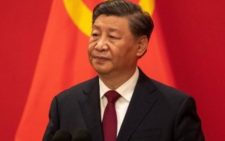Give youth fish, teach them how to catch it

Kenyan coffee entrepreneur Margaret Nyamumbo has bagged a Sh44 million prize from the US show ‘Shark Tank’. If there is anyone who doubts that Kenya is the melting point of entrepreneurship, here is your answer.
It is the answer told by Nyamumbo’s outstanding pitch and Forbes annual list of Africa’s best young entrepreneurs. Interestingly, the list constitutes over five young Kenyans out of the 30 under 30 personalities.
It is the answer told by countless ingenious business initiatives by young people across Kenya. Nyamumbo’s great performance should cause us to think hard as a country on how to promote youth entrepreneurship.
Like many African countries, Kenya has a huge youthful population. According to the 2019 population census, 75 per cent of the 47.6 million population is under 35 years.
Youth aged 15-34 years constitute about 70 per cent of the Working Age Population that is estimated to stand at 19.8 million people.
The group aged 15-34 years, however, is the largest among the unemployed in this cluster.
Tragically, the unemployment rate stands at 40 per cent, with youth constituting at least 75 per cent of the total jobless people nationally.
About 500,000 youth join the labour market every year, with unemployment being the single most serious problem facing them and the country, threatening the achievement of Vision 2030, the country’s economic blueprint.
Since independence in 1964, youth employment has occupied the agenda of successive governments in Kenya. But the right formula to tackle this is yet to be found.
A number of policies, programmes and initiatives have been crafted to address youth unemployment. They include the National Youth Service (NYS), Youth Polytechnics, Youth Empowerment Centres, Youth Enterprise and Development Fund, and Kenya Youth Empowerment Project (that included Kazi Kwa Vijana – KKV).
Others are Kenya Youth Development Policy, National Action Plan on Youth Employment, Kenya Youth Employment and Opportunities Project, and the presidential directive which requires the youth to take 30 per cent preference in government procurement. Most recently, the government launched the financial inclusion initiative: Hustler Fund.
Despite these efforts, a significant number of Kenyan youth remain unemployed, underemployed or underpaid. Many are depressed — a major cause of insecurity, crime, drug abuse and other social ills.
Policies and systems should be put in place to ensure that the funds established benefit the youth. Importantly, don’t just throw money at the youth, train them to be business entrepreneurs and innovators.
The county governments should prioritise and create an enabling environment for job creation. Without a doubt, high youth unemployment will impede the growth and development of counties, if not redressed.
To ensure Kenya’s stability and prosperity, we must establish and support more opportunities for young entrepreneurs. The way to do that is to provide the legal framework and facilitate the youth to establish their own businesses. We should also establish youth-friendly financial services and address the need for start-up credit for new businesses.
Kenya’s prosperity lies in the hands of an entrepreneurial youth. They should be supported to unleash their full potential. To make Kenya unstoppable, we must unleash the potential of young people through entrepreneurship — which creates jobs through innovation, creativity and technology.
Crucially, the government needs to provide even more resources for youth entrepreneurship. If entrepreneurship is not a priority in national budgets, then the drive to tackle youth unemployment won’t get very far.
But we must realise that the government cannot tackle youth unemployment alone. We need to create over 500,000 jobs annually to tackle youth unemployment. The private sector, county governments, academia and the media need to join forces on this.
— The writer is a public policy analyst. Email: raphojuma@hotmail.com











